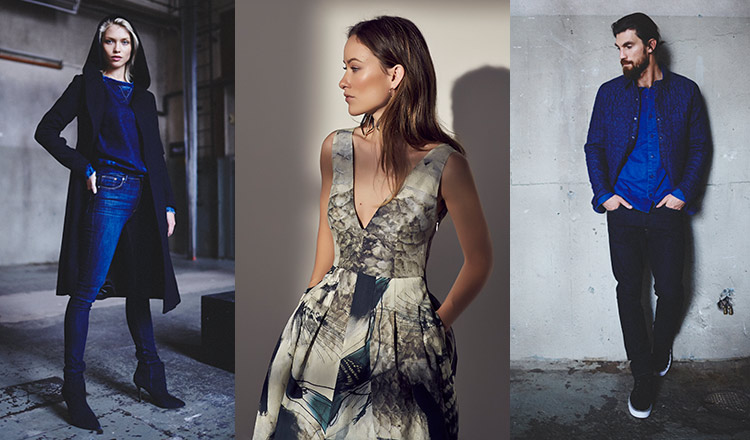Standing in the showroom of H&M’s Sydney heritage building, I feel like a kid in a candy store as I survey the beautifully set up racks of the latest yet-to-be-seen fashion, including the H&M Conscious and Go Green Wear Blue Denim collections.
Moments later, Helena Helmersson – Head of Sustainability worldwide for clothes retailer H&M – greets me with a warm and welcoming smile that immediately puts me at ease. We sit down in the midst of the latest fashion to discuss our shared passion….sustainability.
First, Helena explains her visit to Australia is to help drive and build the debate and awareness about sustainability and why it’s a priority for H&M. “To us at H&M that is part of our values and part of our way of doing business,” she says. “But of course to the outside world this is not known, so I really want to be part of that and raise some awareness in Australia.”
Helena has worked at H&M for 18 years, starting off as a budget controller, then working on collections. It wasn’t until she moved to Bangladesh in a HR role that her interest in sustainability started. ‘I had an image in my head of a Bangladeshi factory of what I thought it would be, then I come to this huge factory, bright and much nicer than I had expected at least, and you see women, and of course the alternative for them is so much worse. Working in a factory is making them much more independent, it’s a fantastic way to strengthen women and families and I think that was what first struck me. The environmental issues I learned. That was a journey – when you learn more about ground levels of water, the climate, you feel that this is urgent. There is really nothing that we should wait for, we have to break new ground and really step up as a leader and show that we are doing completely new things.’
EM: H&M have been heavily involved in sustainability for a long time, not just recently.
HH: Actively we started 18 years ago. Web began in1997 with the Code of Conduct and setting all that up together with some other brands and competitors in the mid 90’s.
So I would say the Code of Conduct meaning working conditions and also chemical use has been on our agenda for a very long time. But, of course, the whole work has evolved and developed. We started off with factory audits and making suppliers improve while today it’s really more about partnerships with suppliers and giving them more incentives meaning that with more responsible behaviour you get more business with H&M. We have more long-term partnerships and less suppliers now.
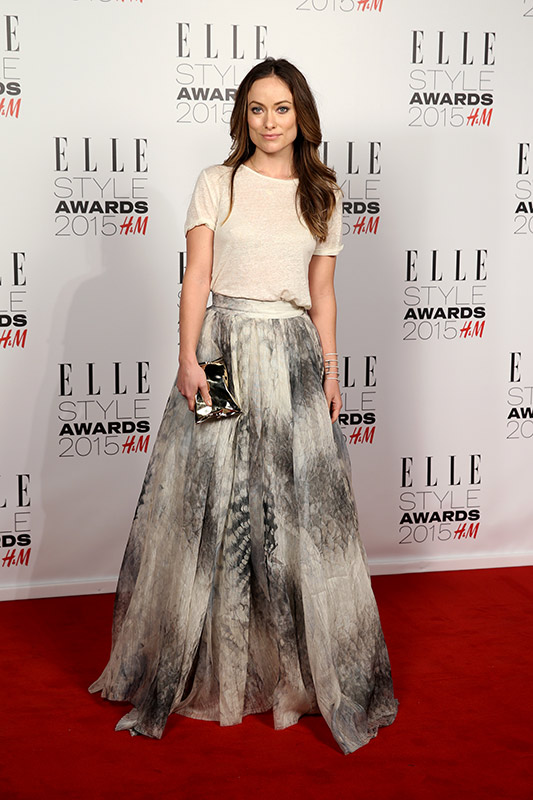
Olivia Wilde, H&M Ambassador, wears the Conscious Exclusive Ayoo Skirt on the Red Carpet.
EM: What would you say has been the most important sustainable achievement for H&M?
HH: The most important thing during my four and half years as head of sustainability, that I feel we have done is integrating sustainability within the company. It’s not just the responsibility of the sustainability department, but it’s actually on the agenda of every department and you are followed up on sustainability in the same way as you are followed up on selling.
EM: H&M’s overall aim is to create a closed the loop, which relates back to what you just said, about sustainability being integrated into every part of the business at every level.
HH: Our main priority is to close the loop with textile fibre use in our garments, that’s why we have started to close the loop with our Garnent Collection programme. Customers can leave their used garments with H&M, if they are not damaged, they are re used. If they are damaged, we recycle them. At the moment, they are made into insulation, but what we really want to do is to bring them back into our collections.
We have managed to do that on a small scale. In Conscious Denim the organic or recycled share in each piece needs to be more than 50% for us to call the product Conscious. For products made of recycled cotton the share is 20%. Of course, we would love that to be 100% but quality requirements don’t allow that today. We have some innovative initiatives where we are trying to find new techniques to make that possible.
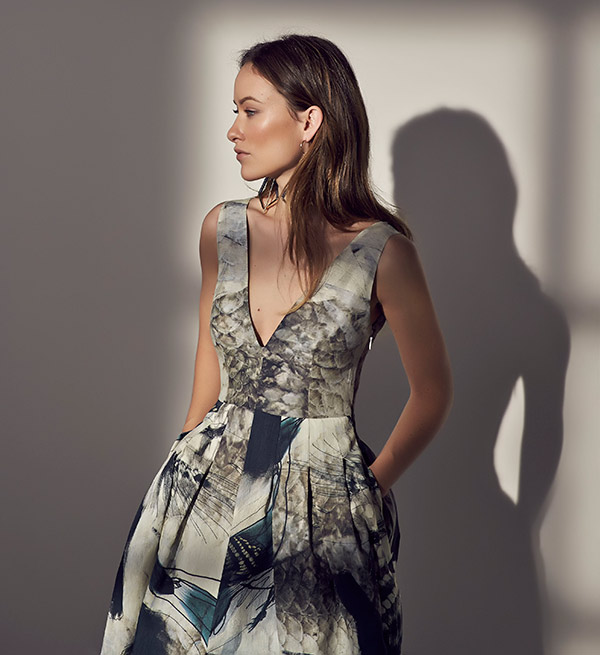
Olivia Wilde, wearing a dress from the Conscious Exclusive collection.
EM: Does your desire to be sustainable outweigh the means and technology available?
HH: Yes. With the kind of ambitions we have, we need to be doing new things. We have invested in innovations that I hope to speak about in the near future. Of course, innovations are high risk and you don’t know when you scale it up how they will perform. So far, we are seeing good results. We hope to come to a point soon where we can show what is possible with cellulosic fibres and polyester.
EM: When did you launch your first Conscious Fashion Collection?
HH: The first Conscious Fashion collection was launched in 2011. I do feel that our Conscious collection has been the most successful in raising awareness with our customers and engaging with them. With the Exclusive Collection, we have shown that these items are ready for the red carpet and that they can be accessible and affordable to many people around the world, because of course that’s what we are here for. We want to make fashion democratic. We can make it possible for people to dress their personality. I think it’s important to show with these Conscious items, that as an ordinary person you can go to our stores and make a conscious decision.
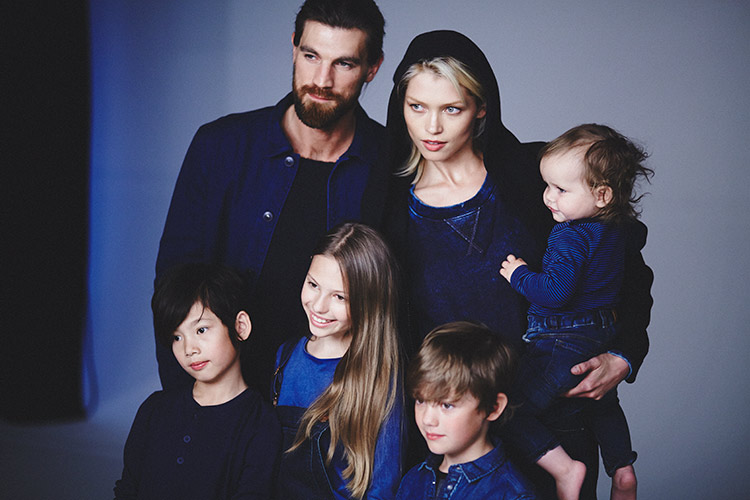
Go Green Wear Blue Conscious Denim collection with recycled and organic fibres.
EM: You have some wonderful ambassadors, Oliva Wilde, who recently wore your Conscious fashion on the red carpet. Your CEO, Karl-Johan Persson said H&M aimed to ‘make fashion sustainable and sustainability fashionable’– I love that line because sustainability is often seen as bohemian. What would you say are the challenges to make this so?
HH: We have always been convinced and proud about our collection of fashion, you can dress for your personality as a way to express yourself. We just don’t want customers to feel guilty about that, and we want our own employees to be proud about being part of H&M. It’s a much bigger reason for being than just selling things, we also want to make sure wherever we exist we contribute for the better and that I think has always been part of H&M because we are very value driven.
I guess the biggest challenge is that lower prices can be misconceived as us standing behind a throw away attitude which is not what we stand for, we stand for democratic fashion and, I think we need to show that in action, like the Garment Collection Program; to show that this is the business model for the future.
I still think that our biggest challenge is the circular thinking and how to make innovations bigger and scale them up.
EM: How has the Australian market embraced your Conscious Fashion and your sustainable initiatives as compared to Europe or other countries around the world?
HH: Consumer awareness is going up, I definitely think that it is through fashion that we will be able to engage with customers about sustainability. I don’t think the debate is as big here as it is in northern parts of Europe with certain issues, like climate and working conditions in the supply chain. I think it’s a bigger debate and I think the debate comes with customer awareness. There is huge potential here, there is a lot of awareness in Australia about water, animal welfare and these kind of issues. I don’t know what you would say about the debate?
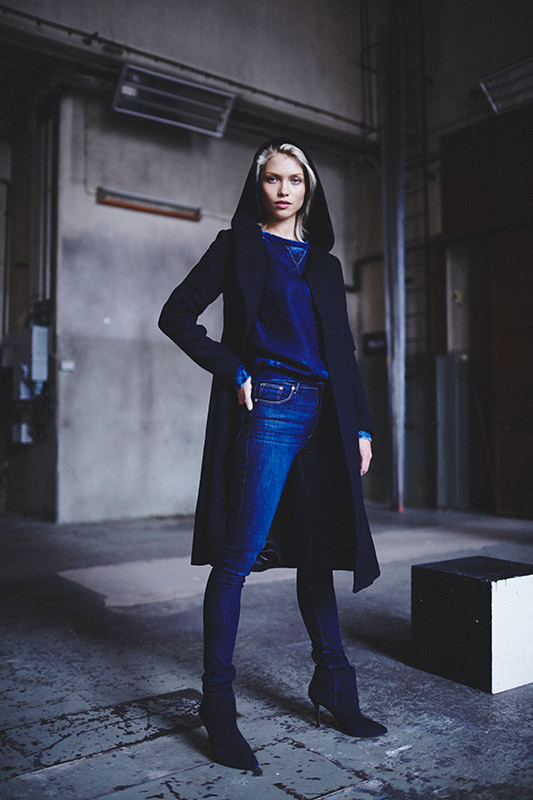
Conscious Denim Collection for Women.
EM: I would say companies like H&M that bring awareness and increase the debate, then increase the number of other companies that want to do the same. So it’s the horse before the cart, it all has to work together and has to come from every direction. But what you’re doing is fantastic and we need more companies doing the same.
HH: I really think H&M can do even more when it comes to communicating what we do in a fashionable way. That is something we are working on, how to integrate it even more into our brand, then I’m sure awareness will come.
EM: Your new campaign, Go Green, Wear Blue Denim Collection is fantastic and has some easy messaging about sustainability. Do you intend to roll out more media campaigns about sustainability like that to build awareness among your customers?
HH: There are two future sustainability topics that we feel industry and H&M can do more about. One is customer engagement – we do that through conscious collections through easy messaging, garment collecting – that has been a brilliant initiative. If you look globally, it’s a big success, because customers really start to change behavior. I think the big question is what more can we do for customers to inspire them to change behavior.
One very interesting initiative is the Higg Index this is a massive collaboration between brands and academia where we are working on a sustainability index for products.
The vision is in a few years, customers will be able to see on a garment how sustainable it is. Imagine you can compare between products and also between brands – I think that would be one way for customer engagement. And the second where I think H&M can do more is through innovation. On our agenda is how to be smarter with natural resources in different ways – you just have to come to that state.
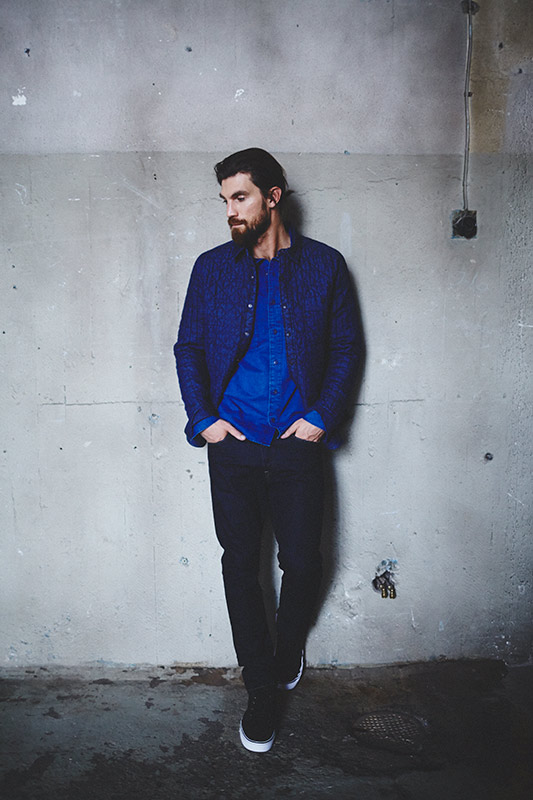
Conscious Denim Collection for Men.
EM: One of my dreams is to go into any shop, buy anything and know exactly what it’s made of, how it can be recycled and where I can take it to be recycled. It seems so simple but I understand the process to get there is a long one.
HH: And I think many progressive brands have started with their own labels, we have that too – I’m super proud of the Conscious label, but of course it gets confusing for customers to see different labels in different stores. It’s not really comparable, but at least if you are in a store it’s good that you can make a more conscious decision, but I think we need to make it easier for customers, and if they are more interested, they should be able to see where it’s produced. So I think transparency is super important for the industry in the future.
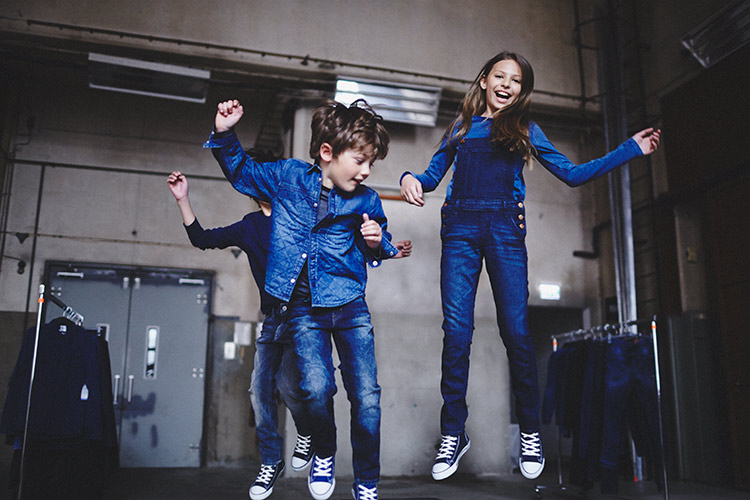
Conscious Denim Collection for kids.
EM: You also have the Clever Care label to show customers how to be more responsible for the way they care for their clothes….
HH: Yes, I think there are some easy fixes. Sometimes when I talk about the little symbol on the label it seems so small, but I think there are some low hanging fruit that you can just change and you should do things in parallel, you should change the products, you should be part of developing the Higg Index, but you can also make these small changes so whenever you look at the label, there is a reminder. If you look at the lifecycle of a garment, 26% of the green house gas emissions occur in the user stage so consumers can do a lot if we just help to build awareness.
Helena is currently transitioning into a new role as Head of Production for H&M ‘Production makes the biggest impact, whether its water, climate, chemicals and human rights, our sustainability journey is biggest in production. I will be responsible for sustainability in production but also quality, prices and lead times. It’s all about how we integrate this even more. I can’t wait to take this next step into structuring the way we buy and integrating our fair living wage roadmap to work smarter with natural resources.’
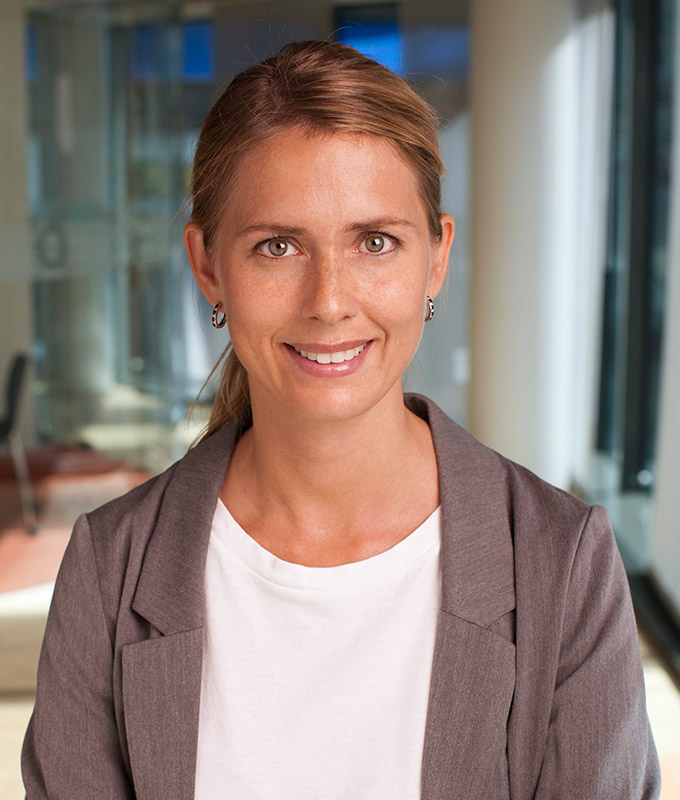
Helena Helmersson
EM: I can’t wait either. One last question….what’s you’re favourite piece?
HH: The Conscious Exclusive Ayoo Skirt worn by Oliva Wilde on the Red Carpet.
Mine too….:)
Are you excited about H&M’s Conscious and Go Green Wear Blue Denim collections? Tell us below…

